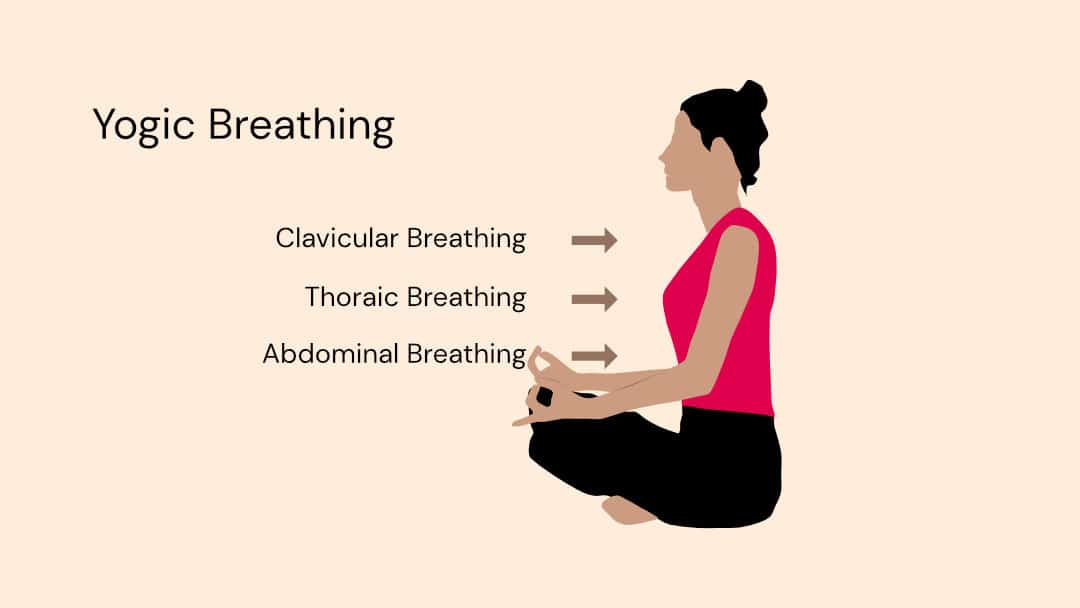Breathing is one of the most essential and basic functions of our body, but did you know that the way we breathe can have a significant impact on our physical, mental, and emotional well-being? This is where the practice of yogic breathing, or pranayama, comes in. Pranayama is the practice of controlling the breath to achieve different outcomes, ranging from stress relief to improved physical health. In this article, we will explore the power of yogic breathing and how it can benefit your overall health and well-being.
What is Yogic Breathing or Pranayama?
Pranayama is a Sanskrit word that translates to “control of the life force.” In the yogic tradition, the breath is believed to be the source of prana or life force energy. Through the practice of pranayama, one can learn to control and manipulate the breath to influence the flow of prana throughout the body.
Pranayama involves a series of breathing techniques that range from simple to complex. Each technique has its unique benefits and is used to achieve different outcomes. Some of the most common pranayama techniques include:
- Ujjayi Breathing: Also known as “victorious breath,” ujjayi breathing is a technique where one breathes in and out through the nose while constricting the throat to create a “whispering” sound. Ujjayi breathing helps to calm the mind and reduce stress.
- Kapalbhati Breathing: This technique involves short, forceful exhales through the nose, followed by passive inhales. Kapalbhati breathing is said to stimulate digestion, detoxify the body, and increase energy.
- Nadi Shodhana Breathing: Also known as “alternate nostril breathing,” this technique involves breathing through one nostril while blocking the other with the thumb, and then switching sides. Nadi Shodhana breathing helps to balance the two hemispheres of the brain and reduce stress.
- Bhramari Breathing: This technique involves inhaling through the nose and exhaling while making a humming sound. Bhramari breathing is said to calm the mind and reduce anxiety.
Benefits of Yogic Breathing:
The benefits of pranayama are numerous and varied. Some of the most common benefits include:
- Stress Reduction: Pranayama is a powerful tool for reducing stress and anxiety. By slowing down the breath and focusing on the present moment, pranayama helps to calm the mind and reduce feelings of stress and tension.
- Improved Respiratory Function: The practice of pranayama can improve lung capacity and function, making it beneficial for individuals with respiratory conditions such as asthma.
- Increased Energy: Some pranayama techniques, such as Kapalbhati breathing, are said to increase energy levels by stimulating the body and increasing blood flow.
- Enhanced Mental Clarity: By reducing stress and calming the mind, pranayama can improve mental clarity and focus.
- Improved Immune Function: Pranayama is believed to stimulate the lymphatic system and boost immune function.
Pranayama and Yoga:
Pranayama is an crucial part of the practice of yoga. It is often referred to as the “yogic breathing” and involves the control of the breath in order to achieve physical, mental, and spiritual benefits. The word pranayama comes from the Sanskrit words “prana” meaning life force or breath and “yama” meaning control.
Prana breath is an important aspect of yoga practice and pranayama. It is said to be the vital energy that flows through all living things, and by harnessing and controlling this energy through prana breath techniques, one can improve their physical, mental, and spiritual well-being. Prana breath is often associated with the act of breathing, but it goes beyond just taking in and expelling air. It involves mindful control and direction of the breath, utilizing the power of prana to bring balance and harmony to the body and mind. Through regular prana breath practice, one can enhance their vitality, focus, and overall sense of calm and peace.
In the practice of yoga, pranayama is considered one of the eight limbs of yoga, along with asana (postures), yama (moral guidelines), niyama (personal observances), dharana (concentration), dhyana (meditation), and samadhi (enlightenment). Pranayama is also considered a preparatory practice for meditation.
Pranayama can be practiced by people of all ages and fitness levels, and has been shown to have a wide range of health benefits. In addition to these physical and mental benefits, pranayama is also believed to help awaken the spiritual energy within us. It is often practiced as a way to connect with the divine and to deepen one’s spiritual practice.
Conclusion:
In conclusion, yogic breathing or pranayama is an essential aspect of a yoga practice and has numerous benefits for physical, mental, and emotional well-being. There are different types of pranayama techniques that one can practice depending on their needs and goals. Some of the most popular pranayama techniques include Kapalabhati, Bhastrika, Nadi Shodhana, and Ujjayi.
Practicing pranayama regularly can improve lung capacity, increase oxygenation, reduce stress, enhance mental clarity and focus, and promote relaxation. It is important to learn pranayama techniques from a qualified teacher who can guide you in the correct practice and help you avoid any potential side effects.
Incorporating pranayama into your daily yoga practice can enhance the benefits of asana and meditation, leading to a more holistic and fulfilling yoga experience. With regular practice, one can achieve greater physical and mental harmony, balance, and well-being.
Originally posted 2023-03-30 16:56:52.



